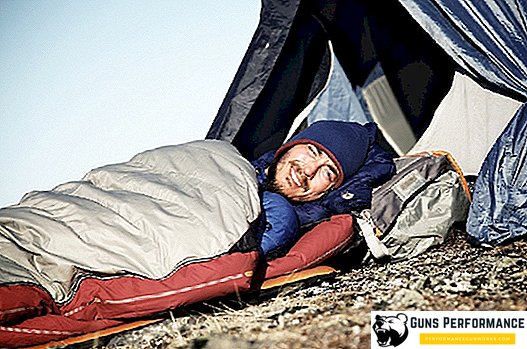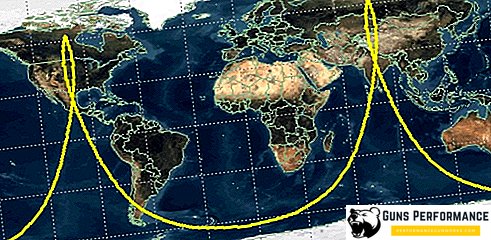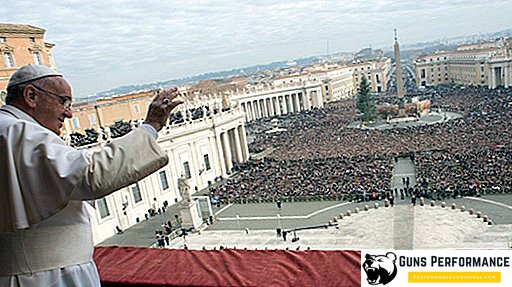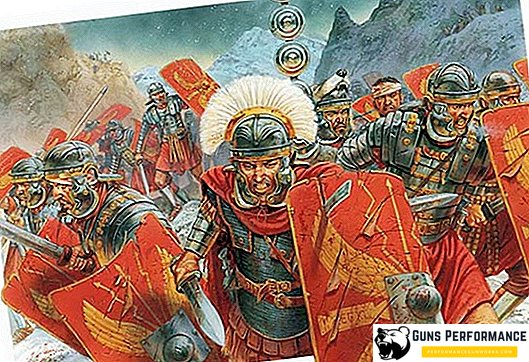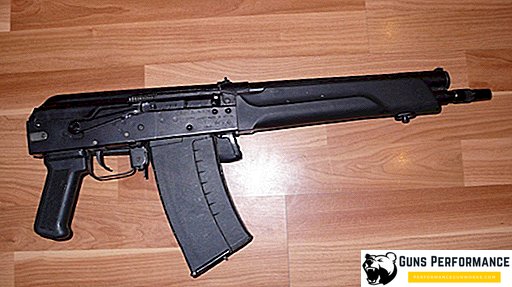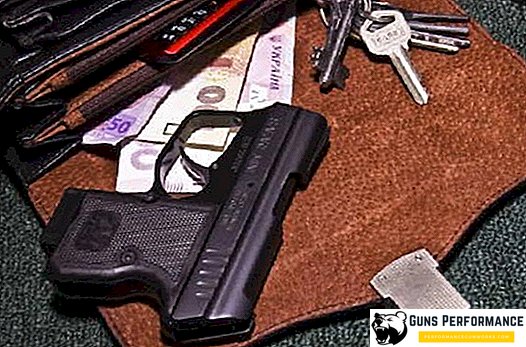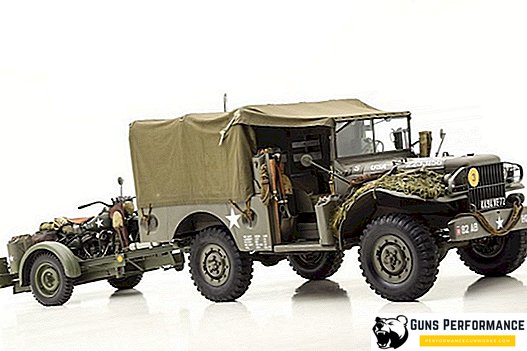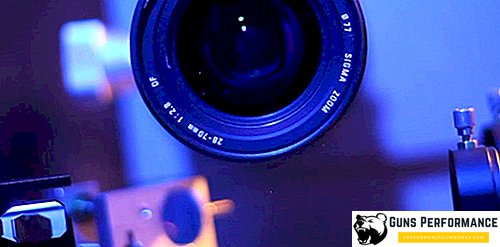BA-3 - Soviet armored car of the middle class, which was collected in the pre-war years (1934-1936). It was created on the basis of the legendary BA-I, which was the founder of the category of medium-sized armored vehicles. The main customer of the equipment was the leadership of the Red Army.
The history of BA-3
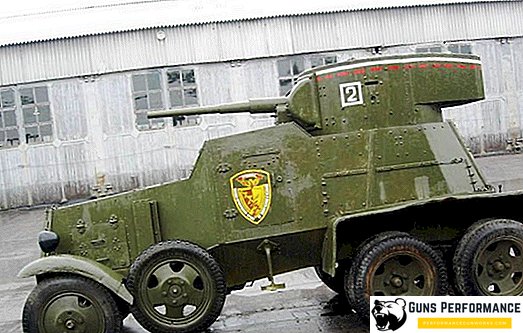
The impetus for creating a new transport was the emergence of a 45-mm 20K tank gun. It was developed on the basis of German guns. Several technical solutions from the prototype PS-2 were introduced into the design.
Izhora plant received an order from the Red Army to collect armored vehicles by November 1, 1932. It was not possible to meet the deadlines, so the first prototype was prepared in April 1933. The delay was explained by the workload of workshops and the lack of skilled workers in the right quantity.
The body was taken from the BAI, the back part was made longer by 50 centimeters. 20K was not suitable for installation in the tower of the previous generation, so the engineers decided to borrow it from the T-26 tank. For weight reduction, the thickness of armored sheets was reduced to 9 millimeters. For the installation of a new design used broadened shoulder strap. Fastening was carried out with six bolts.
Factory tests began a few days after the end of the assembly. The designers did not reveal any significant shortcomings, so the first of May showed transport to the general public at a parade in Leningrad.
Polygon testing took place in the summer of next year. Auto walked 400 kilometers on the highway and 190 kilometers along a country road. The military leadership liked the development, it was noted the convenience of access to the technical components of the engine compartment. Power enough to overcome the 24-degree slope.
Of the minuses identified poor visibility when moving during the fighting. Normal inspection was carried out at a speed of 15-20 km / h, which in the course of the military operation made the vehicle an easy target. Also noted was the poor performance of the cooling system and the unreliable attachment of the body to the frame.
The leadership of the Red Army decided to launch the mass production of the BA-3 armored car even before the end of the ground tests. Before the designers set the task to eliminate all the flaws. The first production batch went off the assembly line in the spring of 1934.
The first copies had problems with welds. There were many cracks on the body. They refused to reduce the production rate, the Red Army sent its specialist to Izhorsk to approve the buildings for special requirements. The assembly was stopped after two years. During this time, they managed to produce 172 cars (some documentation says about 180). Several samples were left for educational purposes and experiments, the rest went to the army.
Design BA-3
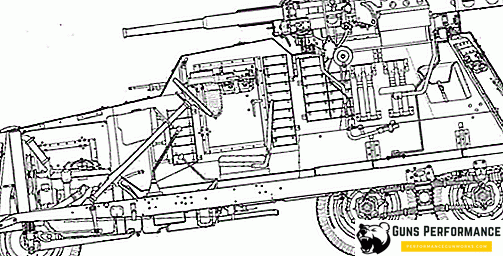
Specifications:
- Length - 4.8 m;
- Width - 2 m;
- Height - 2.5 m;
- Wheel formula - 6x4;
- Ground clearance - 25 cm;
- Power plant power - 40 horsepower;
- Maximum speed - 60 km / h;
- Power reserve - 248 km.
Compared with the previous generation, the length increased by 50 millimeters. Body welded from armor plates (4-8 mm). Engine cooling improved due to the windows in the sides of the engine compartment. The doors were fastened with internal hinges. Latches used to lock the door in the open state. The length of the steps was reduced. Wings equipped with mounts for the transportation of all-terrain chains.
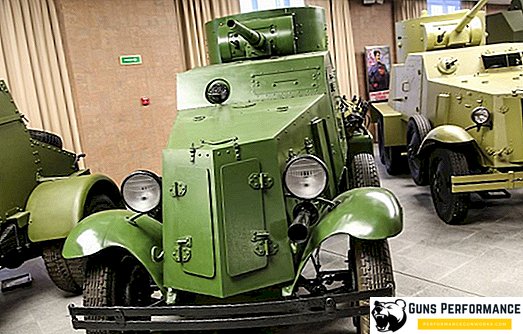
Welding together they connected all the sheets. The seams were reinforced with special armored plates. The side plates in the rear were bent. The main feed sheet consisted of two parts. To enhance the entire length of the connection was attached pad. On the rivets they fixed the corners where the ceiling and the roof rested. In the place of fastening of the tower, the ceiling was reinforced with five struts. The body was connected to the frame with ten brackets with the help of bolts that were turned through rubber gaskets.
Electrical equipment operated on a single-wire circuit. Voltage - 6 volts. Energy comes from the battery (80 Ah) and the generator (100 W). The wires were in the ceiling closer to the left side. In the same part they placed two lamps to illuminate the combat and administrative offices and two light bulbs in the tower. The obligatory package included a fire extinguisher and a first aid kit.
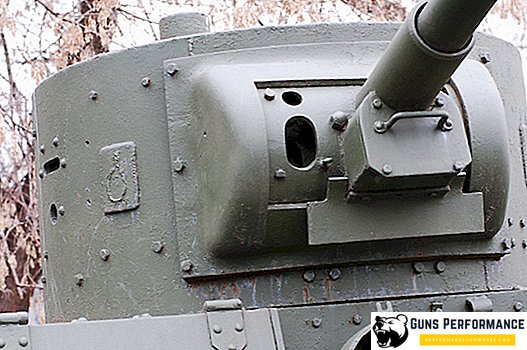
The BA-3 armored car received a turret from a T-26 tank. Horizontal guidance was carried out by an arrow turning mechanism. Its main feature is 2 gears for rotating at different speeds (faster and slower). Loading and unloading arrow passed through the hatches on the roof. The shooter inspected the area through the cracks, protected with glass Triplex. A soldier could use his own weapon to defeat opponents at close range. On the sides of the tower for this, there are three slots, closed by armored dampers.
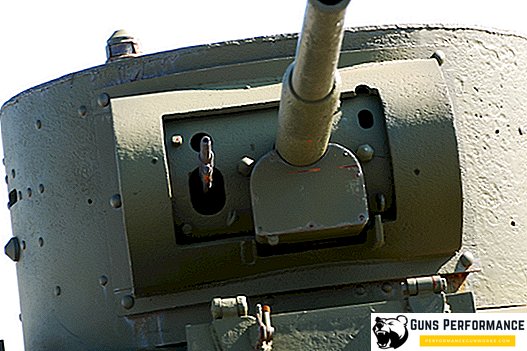
The main armament is a 45-mm 20K tank gun and two DT machine guns (the first in the turret, the second in the driver’s compartment). The aiming on the target was carried out by telescopic sights. The military at their own request could establish periscopic aiming mechanisms. In the back of the tower made a hatch for dismantling the gun in case of repair service.
The filling of the engine compartment was no different from the BA-I. The same power unit Ford, developing 40 horsepower. Thanks to him, the vehicle accelerated to 60 km / h on the highway. The structure of the transmission is not affected.
Modifications BA-3
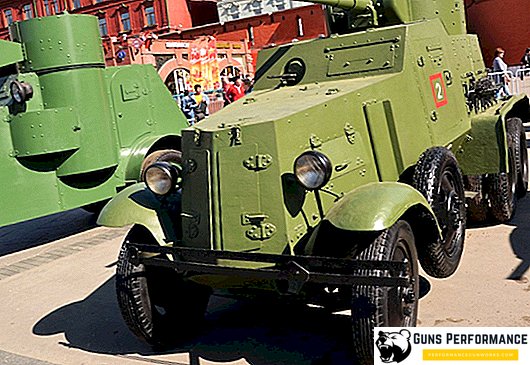
In 1935 there were cars with an installed radio station. For its installation, the designers had to eliminate the laying of shells in the rear niche. There was no distribution of the variety due to the difficulty of assembling radio stations (due to the lack of components). Transport was used by commanders-in-chief.
In the fall of 1936, specialists installed a 12.7-mm DK machine gun in order to increase firepower. The five-day test showed low efficiency due to the “raw” design of the gun. In the spring of next year, the DC was replaced with ShVAK of the same caliber. Shooting at the landfill showed that the weapon is even less effective than the previous version.
In 1935, the designers assembled a prototype with the mark "Railway". Testing showed good results, the technique was planned to run on the conveyor. At the last moment from the use of interchangeable railway wheels refused.
After 5 years of regular operation, all the cars were in poor technical condition (the chassis was worn out). No one began to write off the cars, they decided to transfer them to the new GAZ-AAA chassis. In 1938, the first models received a new engine and chassis, as well as tires with a spongy chamber. The new version received an index of "M", lost half a ton in weight. This had a positive effect on the tactical and technical characteristics. Despite this, the ground tests revealed many flaws in the design of the new BA-3 armored car.
Pre-war use of BA-3
In 1934, the first BA-3s joined the reconnaissance groups. New vehicles in the army replaced the outdated BAI and BA-27. First, the Red Army tried to make a battalion of medium armored vehicles and T-27, but then they abandoned this idea. Made separate compositions of armored vehicles and T-37A.
The first owner was the 20th mechanized brigade in Transbaikalia. She received 58 cars, 20 of which had a radio station on board. By the winter of 1936, the brigade was disbanded due to the impending attack of the Japanese with the aim of making smaller groups (to increase mobility). By this year, many third models replaced the BA-6.
Most of the cars in the years 34-35 joined the cavalry divisions. In the informal documentation also refers to the transfer of several cars in the infantry units.
Military operation BA-3
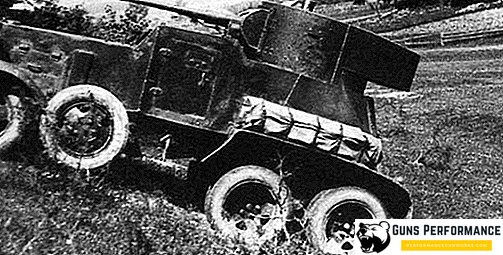
The first combat experience gained in Spain during the civil war. The USSR sent a large batch of military equipment to help the republican leadership of the country, which included 3 copies of the BA-3 armored car. At first they were used in the defense of Madrid, and then in offensive operations in the central part of the country. During the hostilities in 1937, all cars were destroyed.
The first test of the Soviet army took place near the Khalkhin-Gol river in a collision with the Japanese. Using mobile BA-3 soldiers discovered a Japanese settlement where enemy forces were concentrated. Catching the enemy by surprise, all his forces smashed. The Japanese resistance stopped the offensive.
In 1939, the "M" -version took part in the war with Finland. They armed infantry groups. The technique was used to patrol roads and guard headquarters. In December 1939, the vehicles took part in the unsuccessful attack on Karelia. It was attended by two copies that destroyed the enemy. Two models of the BA-3M took part in the defense of Minsk in February 1940.
Several pieces were used by the Wehrmacht and the Finnish army. They were captured during combat operations and sent to overhaul. In the Finnish army, the only car was in service until 1954. To this day, one car has survived, which can be viewed in the Museum of armored vehicles in the Moscow region.
What can be concluded?
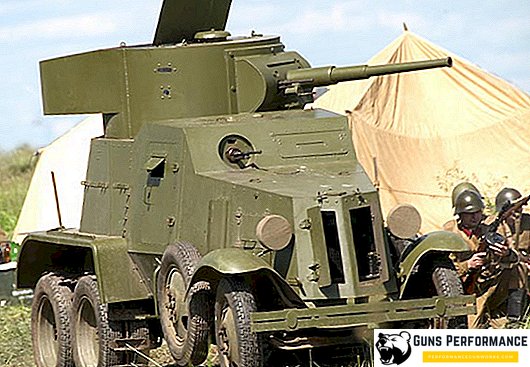
BA-3 served the Soviet Union well. It is considered an intermediate option in the class of medium armored vehicles. In the future, on the basis of the BA-3 armored car, engineers developed the BA-6, and then the 10th model.


